Have you ever wondered how animals see the world around them? Well, Home Advisor created a project just to answer that question. They went through the latest scientific research to find out and visualized how animals see.
Home Advisor created a digital room and placed animals around it. After that, they rendered the pictures based on the way the specific animal would see it. For example, dogs see very few colors and spiders look like they should get some glasses. It is quite an interesting idea, as many of us have probably wondered how a little goldfish sees the world from its tank or how a chameleon uses its eyes. What do you think about this project? Did any of the images surprise you? Tell us in the comments!
More info: homeadvisor.com
Have you ever wondered how animals see the world around them? This project decided to show how these 7 animals see the same apartment
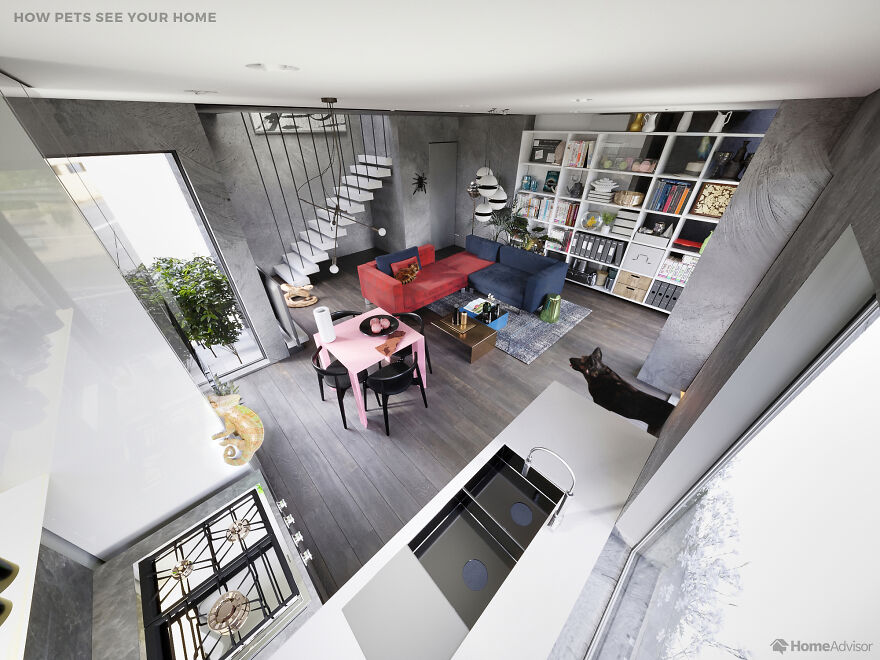
Image credits: homeadvisor
The project first shows how a human would see the same place

Then shows how different animals view the same spot. This is how a dog sees

Image credits: homeadvisor
“Your dog will take just about any style you make at home and turn it into a pastel-colored coastal living kind of affair. Dogs see muted combinations of the colors filtered by their two-cone eyes: blue and yellow.”
Human vision

How cats see
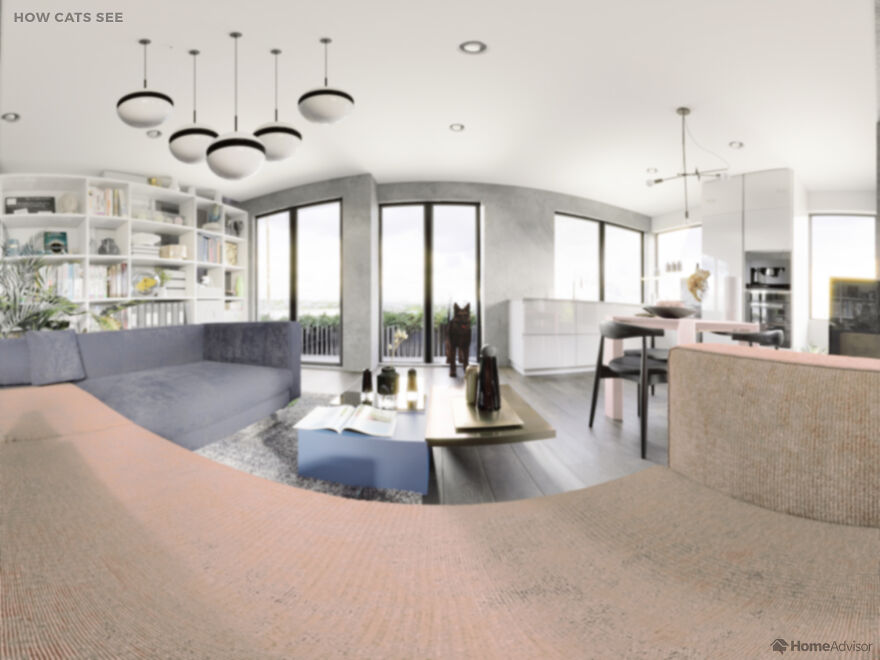
Image credits: homeadvisor
“Cats must see things differently to live the way they do. But existential outlook aside, a cat’s point-of-view is characterized by its excellent night vision. While humans have a high number of cones in our retinas, cats have lots of rods – a different type of photoreceptor cell, sensitive to low light.
Your cat has a wider field of view than you (200 degrees versus 180) but not quite as wide as that of a dog. Its color vision is somewhere between that of you and your dog, too, since it is a dichromat (has two color cones) that sees blues and yellows with a bit of green as a bonus.”
Human vision

How goldfish see

Image credits: homeadvisor
“If your goldfish turns its nose up at your new suite, it’s because she can see more colors than you. Her ability to see ultraviolet light helps her see in the water, but may also reveal where your dog has tried to mark its territory on the sofa.
Appropriately enough, a goldfish also enjoys a fisheye lens effect. Its round corneas gather light from an almost 360-degree canvas, and are almost the same density as water, compensating for the warping effects of light in water.”
Human vision

How snakes see
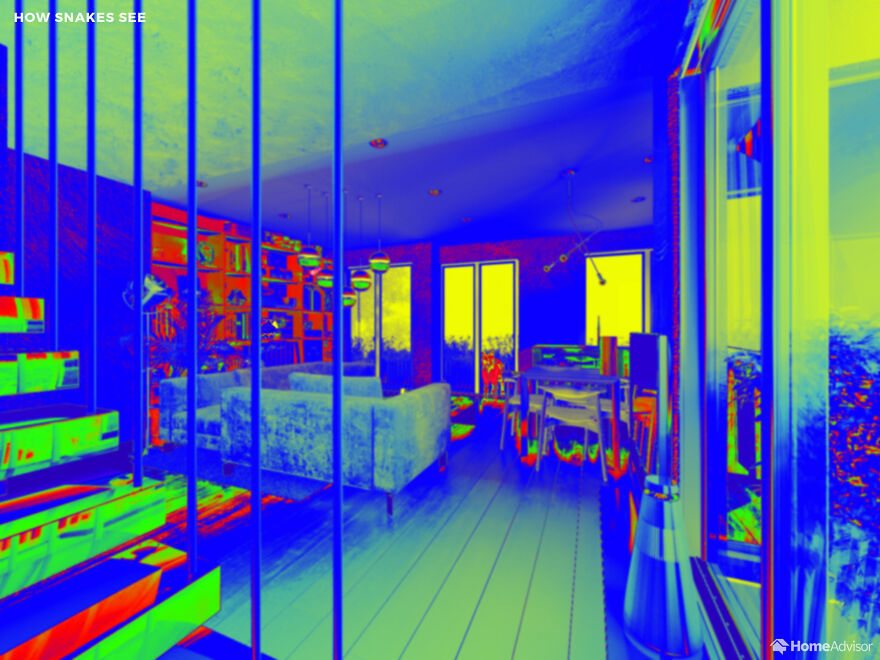
Image credits: homeadvisor
“If your only pet is a snake, you needn’t worry about the visual design of your interiors. Most snakes have very poor vision in daylight, although a good serving of rods means their nighttime vision isn’t too shabby.
The bonus for some snake species is infrared vision. Your snake may merge heat-detection data from its pit organs (thin membranes between the eyes and nostrils) with visual data to create an image that looks something like thermal imaging.”
Human vision

How spiders see
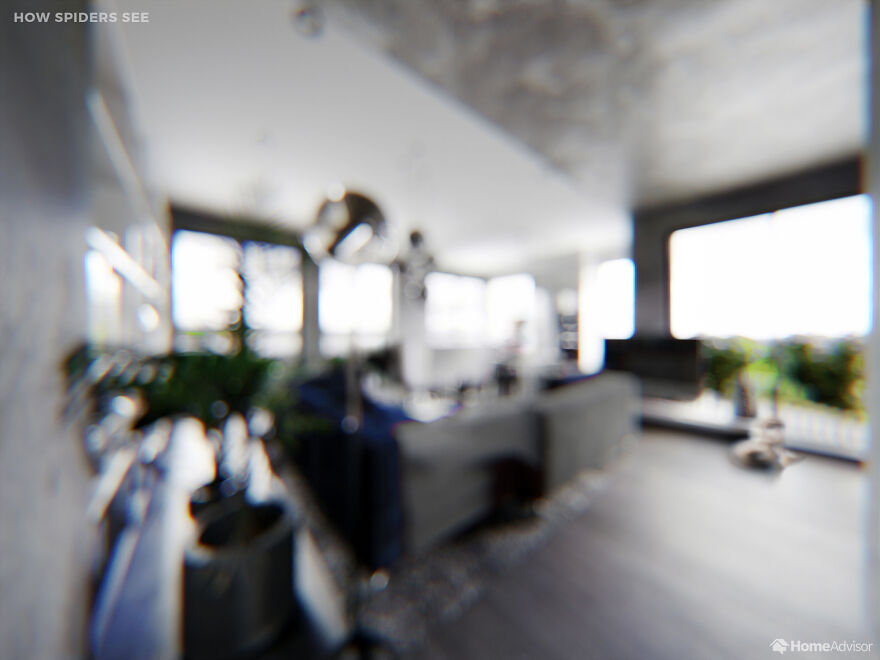
Image credits: homeadvisor
“Most spiders have eight rather feeble eyes and rely more on their hairy legs to feel their way around.
However, researchers have recently noted the color-sensing structures of opsins (a type of protein) might make them sensitive to color, and might be used to find mates. So if you notice your tarantula getting frisky with a bright blue ashtray, you know that science is on to something.”
Human vision

How parrots see
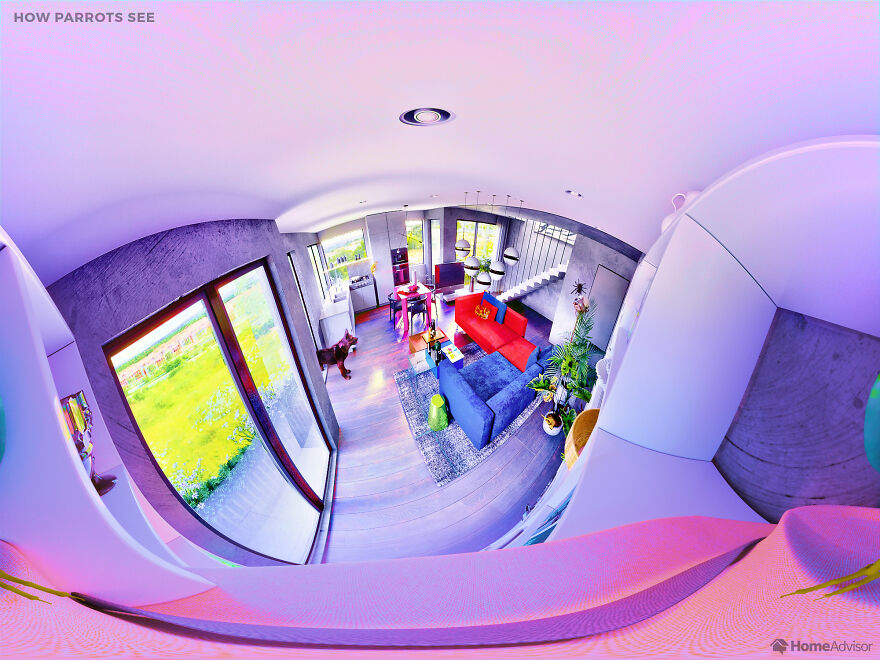
Image credits: homeadvisor
“Birds rely heavily on a highly effective visual system, and your parrot can see UV, blue, green, and red color ranges. In fact, the ‘violet’ color in this picture has been used to double for ultraviolet, which is actually colorless and invisible to humans.
Polly can also adjust her focus super-quickly and has near 300-degree coverage but monocular vision, meaning one eye focuses on one thing while the other wanders. She can also contract her pupils at will, for example, if she doesn’t dig your new lampshade.”
Human vision
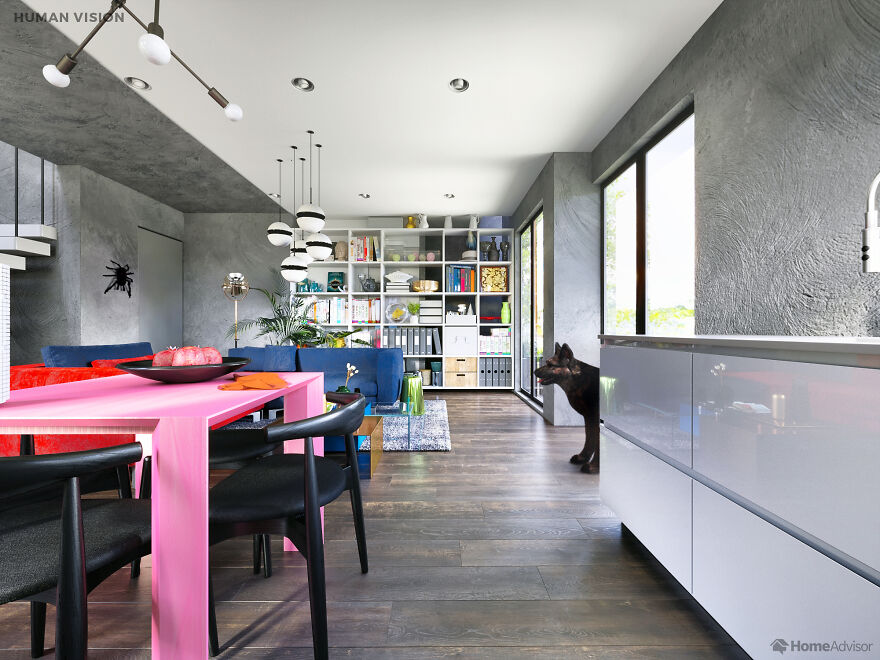
How chameleons see
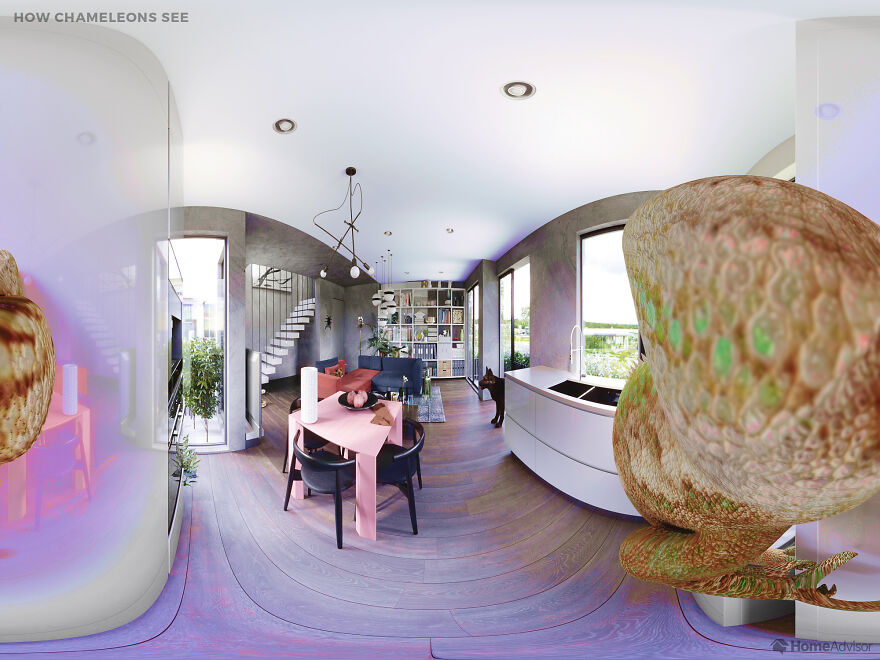
Image credits: homeadvisor
“Who cares more about your choice of living room palette than your pet chameleon? Not only does he absorb, transform, and re-emit color (changing to regulate temperature and communicate), his eyes are almost all ‘cone’ and no ‘rod,’ so he sees lots of colors (including the ultraviolet spectrum) but little contrast.
Your chameleon’s eyes operate independently on little turrets so that he can watch for predators across a total field of vision of 342 degrees. If you need to creep up on him to grab your copy of Wallpaper back, you’ll find he has a blind spot of 18 degrees just behind his head.”
Here’s how the animals would see the same place

Dogs

Cats
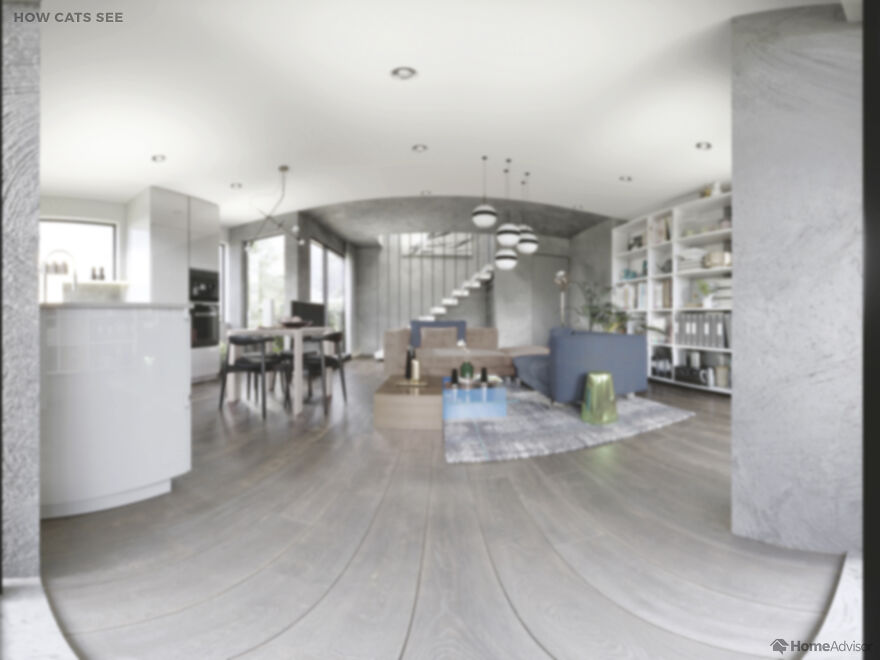
Goldfish
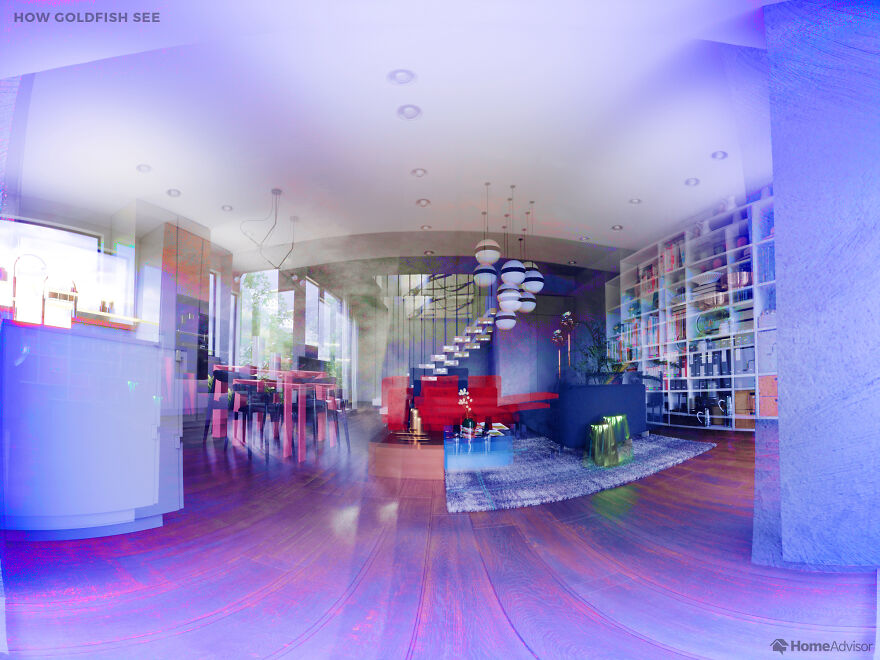
Snakes
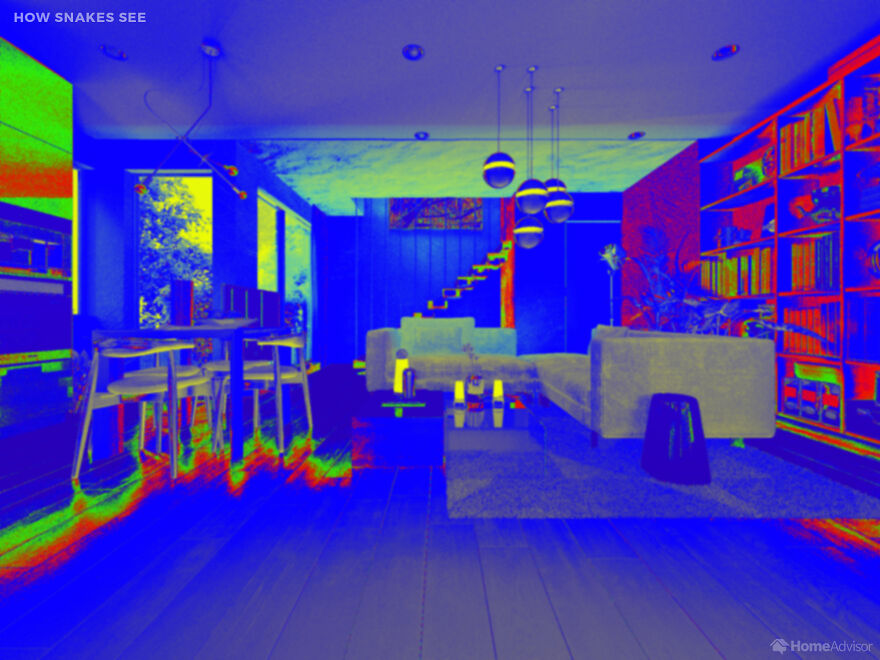
Spiders
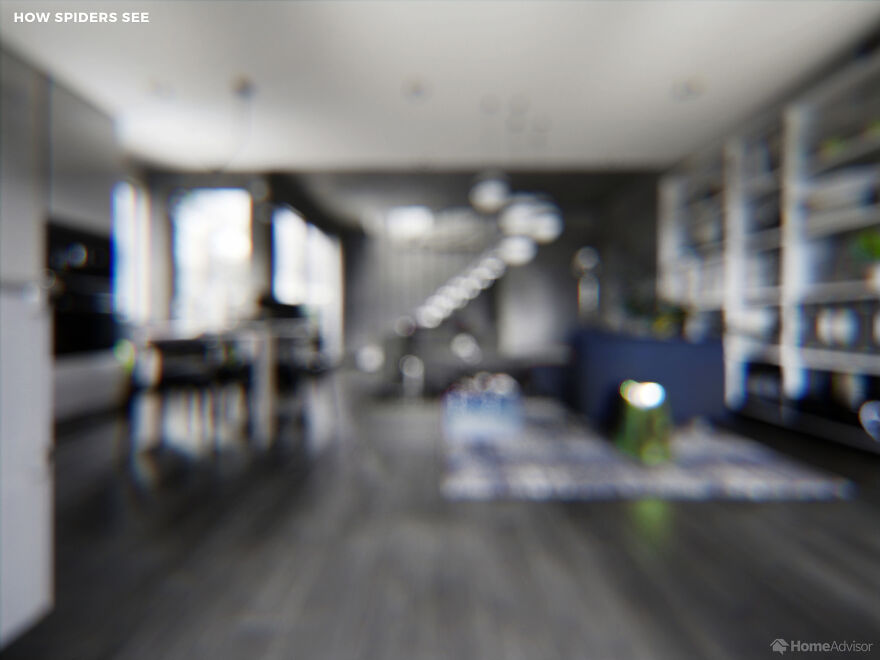
Parrots
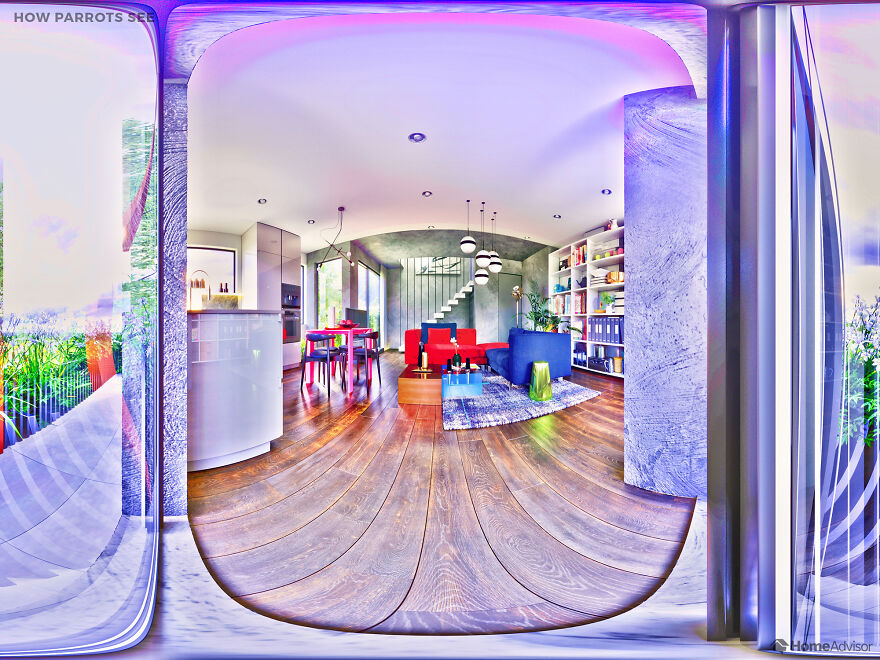
Chameleons
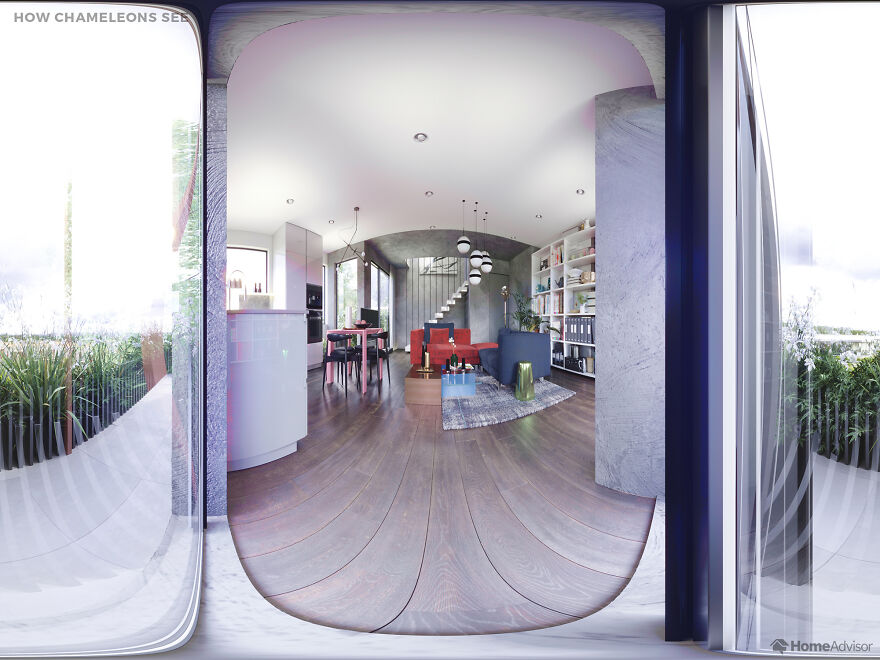
Here’s the floor plan for the room
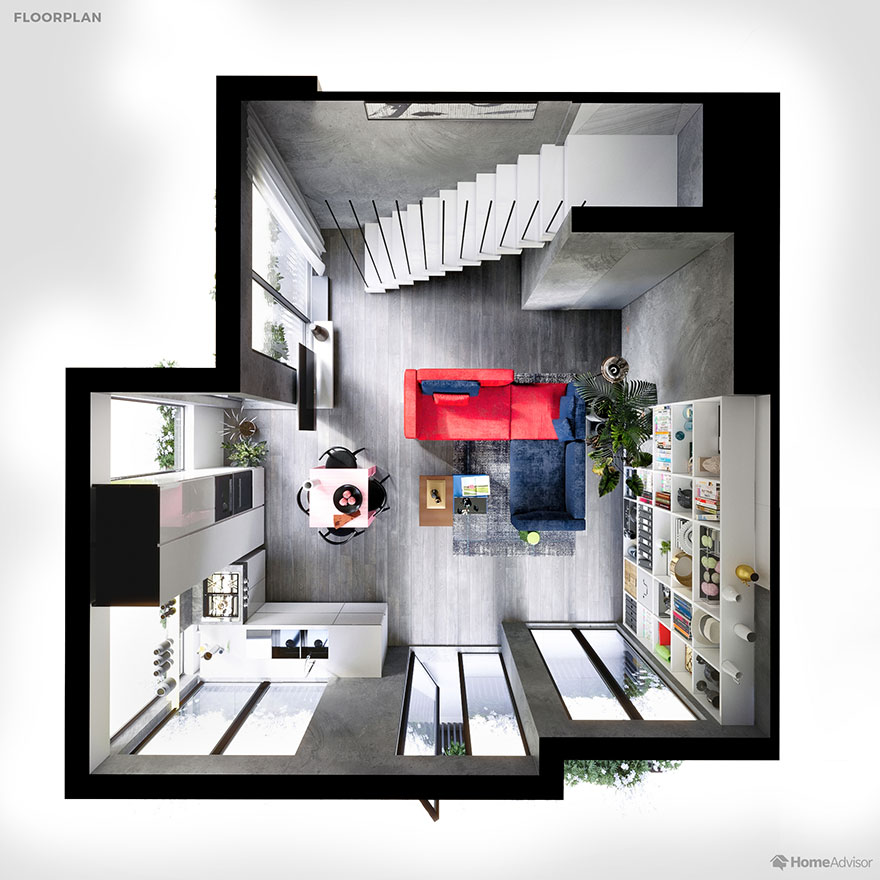
The post This Project Shows The Way Pets See Their Environment first appeared on Bored Panda.
from Bored Panda https://ift.tt/35FKYZ6





0 Yorumlar